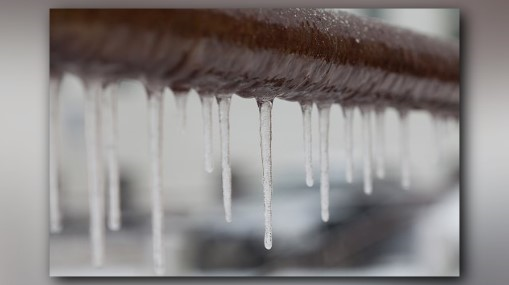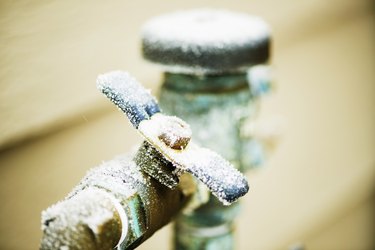Tips for Avoiding Frozen Pipes in Winter: Specialist Advice
Tips for Avoiding Frozen Pipes in Winter: Specialist Advice
Blog Article
We have come across this great article about Preventing and dealing with frozen pipes below on the internet and thought it made sense to write about it with you here.

Cold weather can wreak havoc on your plumbing, especially by freezing pipes. Here's just how to stop it from occurring and what to do if it does.
Introduction
As temperature levels decline, the danger of icy pipes boosts, potentially causing costly fixings and water damage. Comprehending how to prevent frozen pipelines is vital for home owners in cold climates.
Recognizing Icy Pipelines
What creates pipelines to freeze?
Pipelines ice up when subjected to temperatures below 32 ° F (0 ° C) for expanded durations. As water inside the pipelines freezes, it increases, taxing the pipeline wall surfaces and potentially creating them to burst.
Threats and damages
Icy pipes can lead to water supply interruptions, residential or commercial property damages, and pricey repair work. Burst pipes can flood homes and create substantial structural damage.
Indicators of Frozen Pipeline
Identifying icy pipes early can prevent them from breaking.
How to recognize frozen pipelines
Try to find decreased water circulation from faucets, uncommon odors or sounds from pipes, and noticeable frost on exposed pipelines.
Prevention Tips
Shielding at risk pipes
Wrap pipelines in insulation sleeves or use warm tape to secure them from freezing temperatures. Focus on pipelines in unheated or exterior locations of the home.
Home heating techniques
Maintain interior areas effectively heated, particularly areas with plumbing. Open up cabinet doors to permit warm air to circulate around pipes under sinks.
Safeguarding Exterior Pipes
Yard tubes and exterior taps
Detach and drain garden hoses before winter months. Install frost-proof faucets or cover exterior taps with insulated caps.
What to Do If Your Pipes Freeze
Immediate activities to take
If you presume frozen pipelines, keep faucets open to relieve stress as the ice melts. Use a hairdryer or towels taken in warm water to thaw pipelines slowly.
Long-Term Solutions
Structural changes
Consider rerouting pipes away from exterior walls or unheated locations. Include added insulation to attics, basements, and crawl spaces.
Upgrading insulation
Purchase high-grade insulation for pipelines, attic rooms, and wall surfaces. Correct insulation aids keep constant temperature levels and minimizes the danger of frozen pipelines.
Verdict
Stopping frozen pipes calls for proactive actions and fast reactions. By understanding the reasons, indications, and preventive measures, home owners can secure their plumbing throughout cold weather.
6 Proven Ways to Prevent Frozen Pipes and Protect Your Home
Disconnect and Drain Garden Hoses
Before winter arrives, start by disconnecting your garden hoses and draining any remaining water. Close the shut-off valves that supply outdoor hose bibs and leave the outdoor faucet open to allow any residual water to drain. For extra protection, consider using faucet covers throughout the colder months. It’s also important to drain water from any sprinkler supply lines following the manufacturer’s directions.
Insulate Exposed Pipes
Insulating your pipes is an effective way to prevent freezing. Pipe insulation is readily available at home improvement stores and is relatively inexpensive. Pay close attention to pipes in unheated areas such as the attic, basement, crawl spaces, or garage. Apply foam insulation generously to create a buffer against the cold. You can also wrap your pipes in heat tape or thermostat-controlled heat cables for added warmth.
Seal Air Leaks
Inspect your home for any cracks or openings that could let in cold air. Seal any holes around the piping in interior or exterior walls, as well as the sill plates where your home rests on its foundation. Additionally, make sure to keep your garage door closed unless you’re entering or exiting. Leaving it open creates a significant air leak that can lead to frozen pipes.
Allow Warm Air Circulation
During cold snaps, it’s essential to allow warm air to circulate evenly throughout your home. Leave interior doors ajar to promote better airflow. Open kitchen and bathroom cabinets to help distribute heat consistently around the rooms. If you have small children or pets, be sure to remove any household chemicals or potentially harmful cleaners from open cabinets for safety.
Let Faucets Drip
A small trickle of water can make a big difference in preventing ice formation inside your pipes. When temperatures drop significantly, start a drip of water from all faucets served by exposed pipes. This continuous flow helps prevent the water from freezing. Additionally, running a few faucets slightly can relieve pressure inside the pipes, reducing the chances of a rupture if the water inside does freeze.
https://choateshvac.com/6-proven-ways-to-prevent-frozen-pipes-and-protect-your-home/

We had been shown that article on Helpful Tips to Prevent Frozen Pipes this Winter from a pal on our other blog. Are you aware of anybody else who is excited about Helpful Tips to Prevent Frozen Pipes this Winter? Please feel free to promote it. Many thanks for going through it.
Book A Service Call Report this page